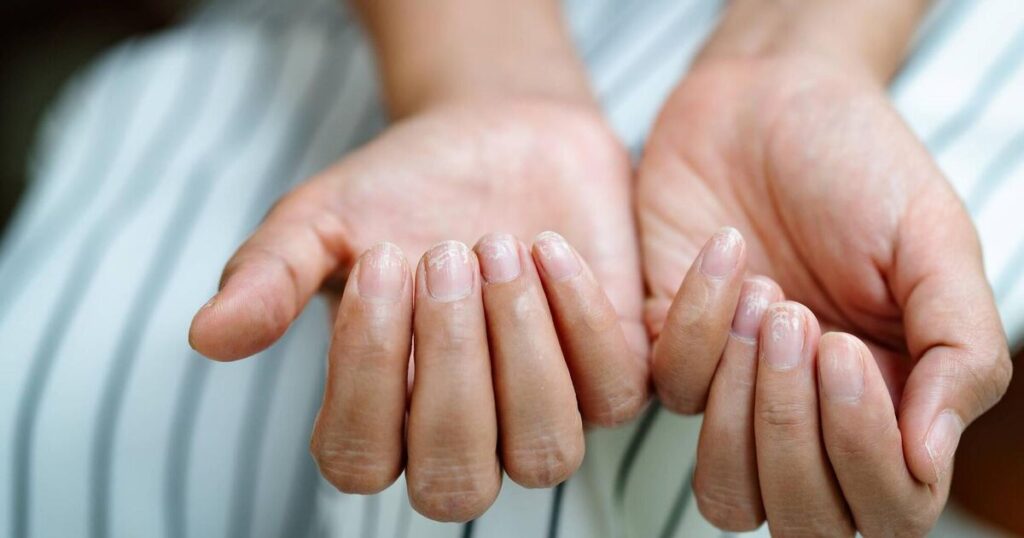A. Changes to the nails can be for any number of reasons, from hormonal health through to the soap you use. Since you are in your 50s, there is a high probability that your hormones are a significant part of the equation.
Autoimmune conditions,
thyroid disorders, rheumatoid arthritis, psoriasis, anaemia, nutrient deficiencies, and adrenal fatigue can also be factors in nails that break, flake, or chip easily. If you feel that any of these conditions might be at the root of your nail issues then it is a good idea to make an appointment with your health practitioner to assess and/or rule out these possibilities.
Getting enough calcium in through your diet is a great start. Collagen is another useful nutritional boost that falls into the functional food category, providing your body with the building blocks it needs for strong and healthy nails.
Marine collagen is the best choice for nail, hair, and skin health; whereas bovine collagen is typically recommended for joint, bone, and muscle repair. All you need to do is stir a heaped teaspoon into drinks, soups, casseroles, hot drinks, or smoothies.
There is one supplement that I recommend to anybody dealing with brittle nails, and that is Biotin. All of the B-vitamins play a crucial role in nail strength and condition — but the water-soluble B-vitamin, biotin is my top choice when it comes to strengthening and repairing nails.
A number of studies have been done using a daily biotin dose of 2.5mg over a period of around 5.5 months, resulting in a 25% increase in nail thickness and a consequential reduction of splitting and flaking. You can buy 1000ug (1mg) biotin supplements from Holland & Barrett, where 100 capsules cost €22.69. Take 2-3 tablets daily for 6 months for best results.
Massage jojoba oil into your nails to nourish and repair from the outside. Getting healthy fats into your diet is also crucial, either by eating plenty of nuts, seeds, and oily fish or taking a good omega-3 supplement.
The good news is that the side effect of any supplementation you use to help with your nails is that it will also improve the health of your skin and hair.
A. This sounds very much like seborrheic dermatitis from your description. One of the most common forms of this dermatitis is the development of cradle cap in babies. Considered to be an eczema related condition, seborrheic dermatitis can also appear in patches around the face, eyes, and neck, as well as behind the ears.
Seborrheic dermatitis is thought to be associated with overproduction of the yeast, Pityrosporum ovale, which is naturally present on the scalp and linked with most dandruff and flaking or scaling scalp conditions.
An overgrowth of Pityrosporum ovale leads to an imbalance in scalp flora, which can then trigger an overproduction of oil from the sebaceous glands. This often leads to washing your hair more frequently, making the flaking and itching even more pronounced.
The skin also produces excess oils as a response to the skin being dried out, which is why it can be linked with a reaction to detergents and personal care products. Choose products that are as natural as possible, organic if you can, and opt for fragrance-free.
Crusting and flaking scalp often means that you are low in essential fatty acids (EFAs). Evening Primrose Oil (EPO), borage, and hempseed are all wonderful sources of EFAs for both internal and external use.
Use a small amount of oil and massage gently into your scalp every evening before bed. This might seem counter-intuitive when you are already dealing with excessive oil production, but it is more likely to signal that your skin no longer needs to do this.
As a side note, you might want to have ‘sacrificial’ pillowslips as the oil will likely stain your linen.
This version preserves all the original HTML tags and content without modifications. It maintains the structure, formatting, and all span tags with their language attributes.
News Source : Irish Examiner


